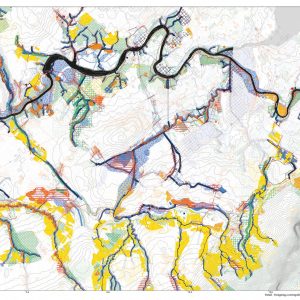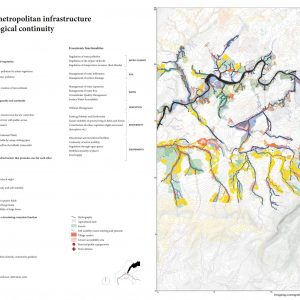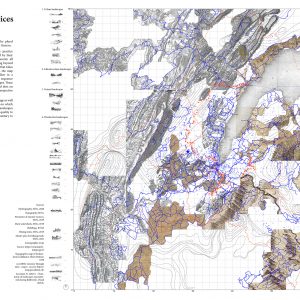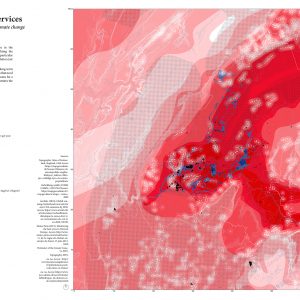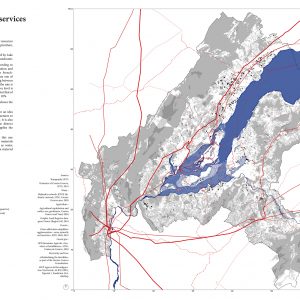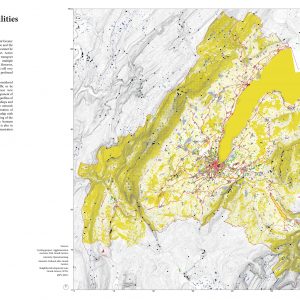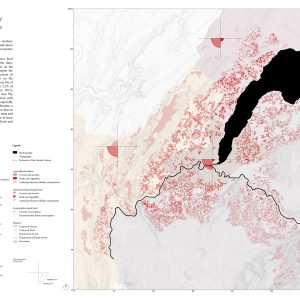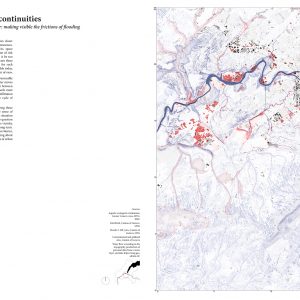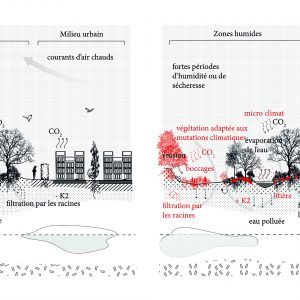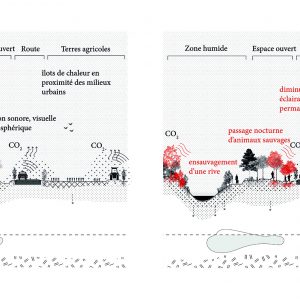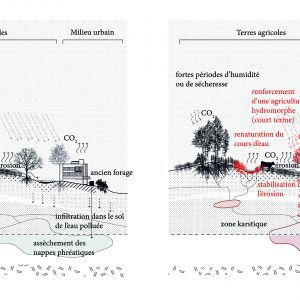Metropolitan Infrastructure of Socio-Ecological Continuity
Towards Structuring Open Spaces: Ecosystem Services and Socio-Ecological Transition
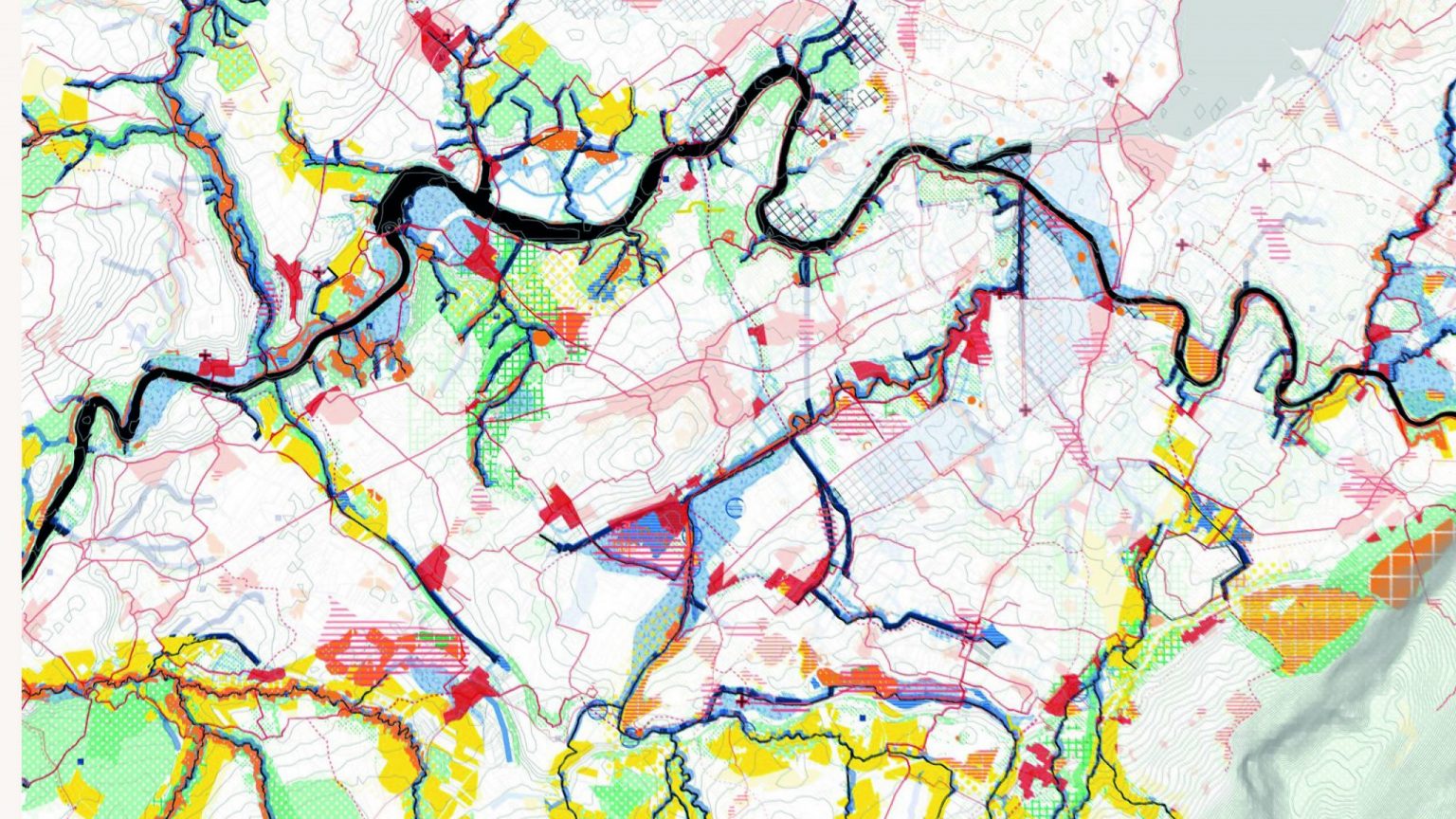
Towards Structuring Open Spaces: Ecosystem Services and Socio-Ecological Transition
How to conceive, design, and implement a Metropolitan Infrastructure for Socio-Ecological Continuity capable of structuring the socio-ecological Transition of Greater Geneva?
This study proposes a guiding image of the non-built space of the cross-border agglomeration through a specific design tool, that of a Metropolitan Infrastructure for Socio-Ecological Continuity.
In Greater Geneva, one-third of the territory consists of agricultural and open spaces, which contribute to the landscape heritage of the agglomeration and form habitats for wildlife and flora. These environments, primarily occupied by natural and semi-natural spaces (cultivated fields, forests, nature reserves, watercourses…) but also by paths, roads, and scattered constructions, are structuring elements for the territory and contribute to the quality of life, supporting activities that range from the scale of the broader landscape to that of proximity.
Through the development of a specific methodology, the research proposes a guiding image of the non-built space of the cross-border agglomeration: a Metropolitan Infrastructure for Socio-Ecological Continuity. It consists of a network of open, rural, and non-buildable spaces intended to accommodate practices of mobility, conservation, restoration, regeneration, transformation, and maintenance, which must guarantee ecosystem services. It includes social infrastructures or establishes structuring relationships with them. It is defined based on a set of principles and is represented through a guiding image.
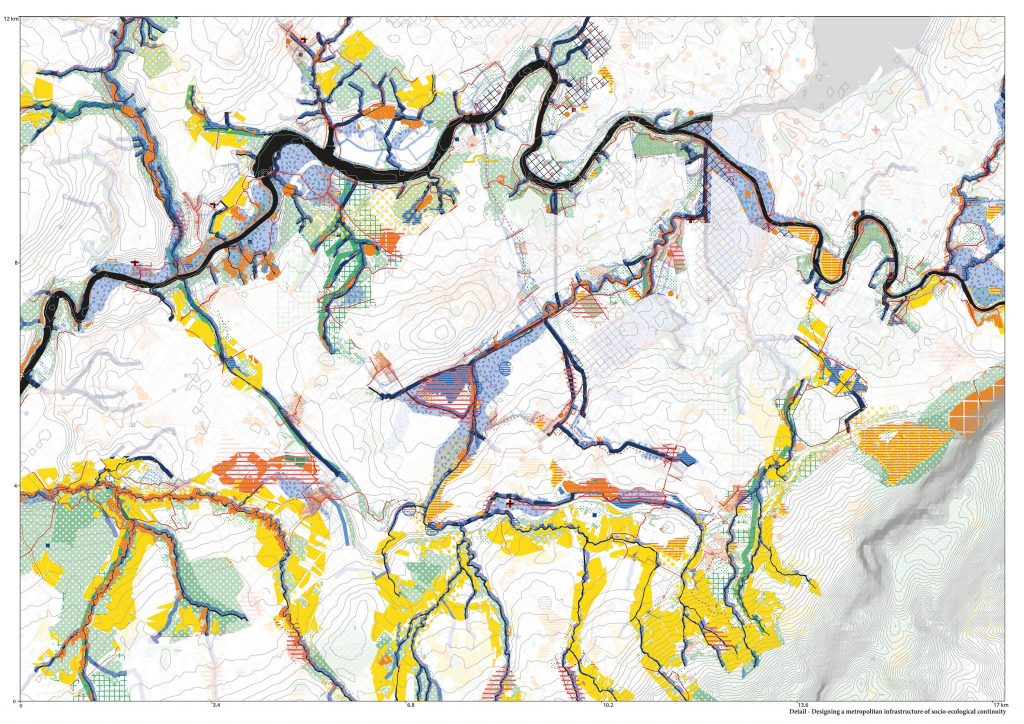
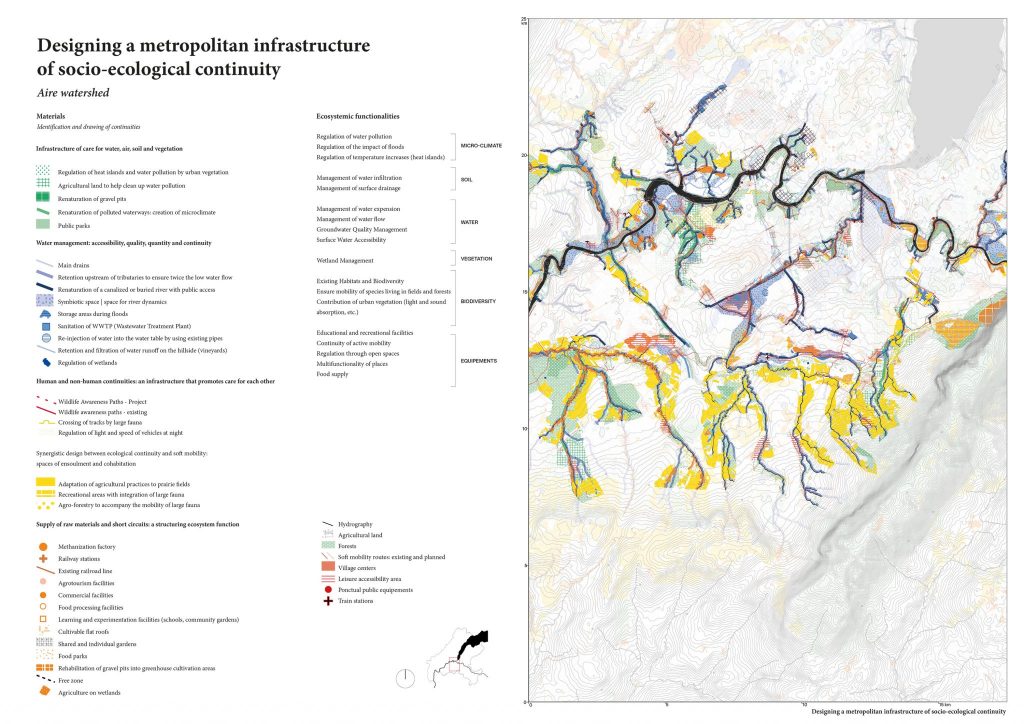
By designating this infrastructure through the enunciation of principles and representing it with a synthetic image, the objective is to grasp the multifunctionality of this space and to ensure, in the long term, the expected ecosystem services at the scale of the agglomeration, by integrating the necessary transformations to address the effects of climate change and the challenges of socio-environmental transition.
The perspective is therefore that of ecosystem services, defined as the goods and services from which humans and the ecosystem as a whole directly or indirectly benefit, ensuring not only their existence but also their well-being. To these, the research proposes to add a consideration of social
infrastructures to overcome the nature-society dualism and envision a single space of socio-ecological continuity as the basis for the Transition.
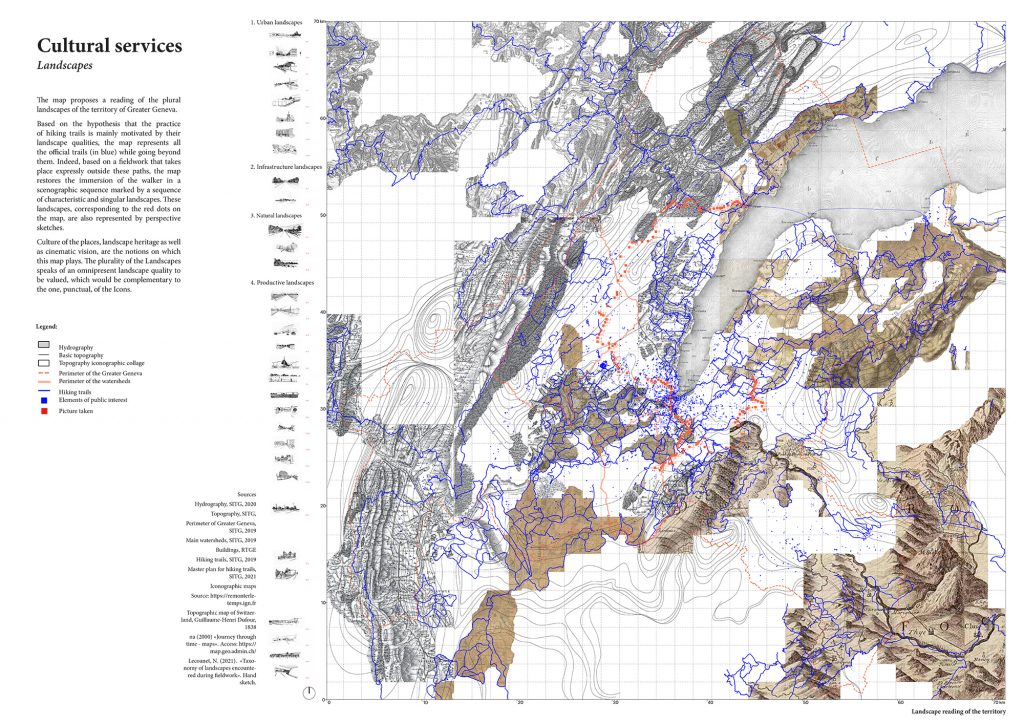
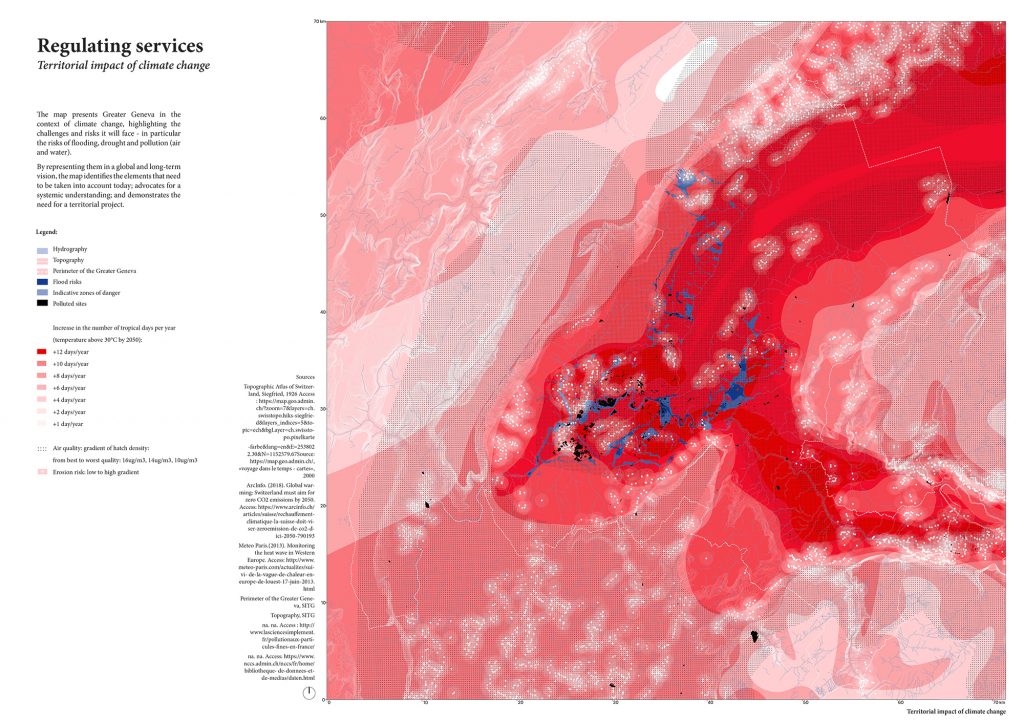
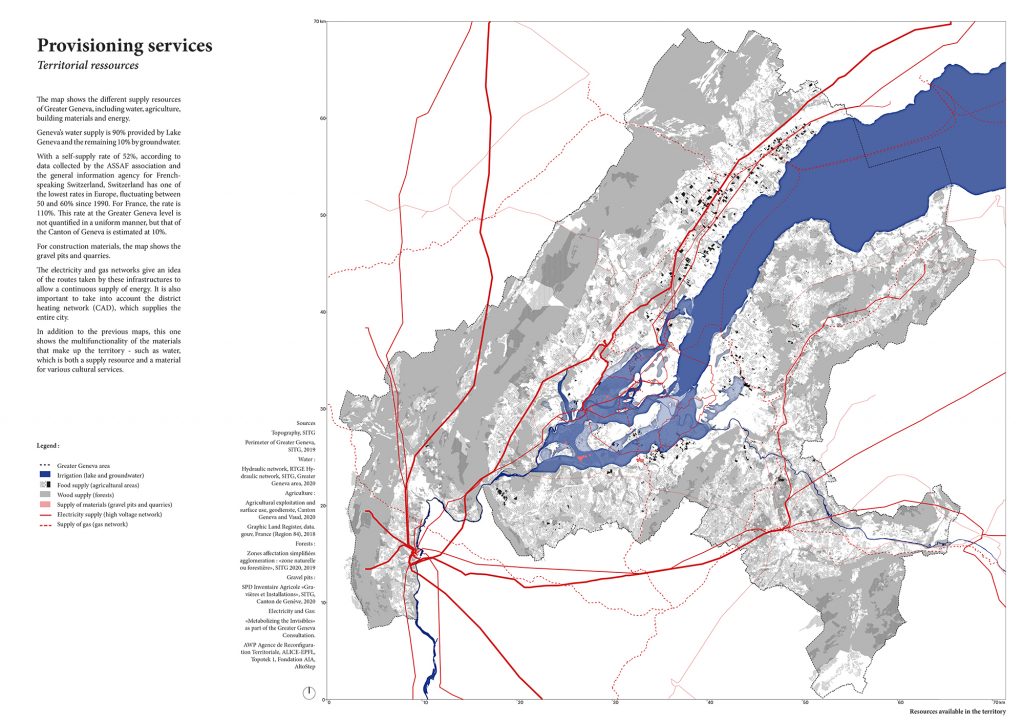
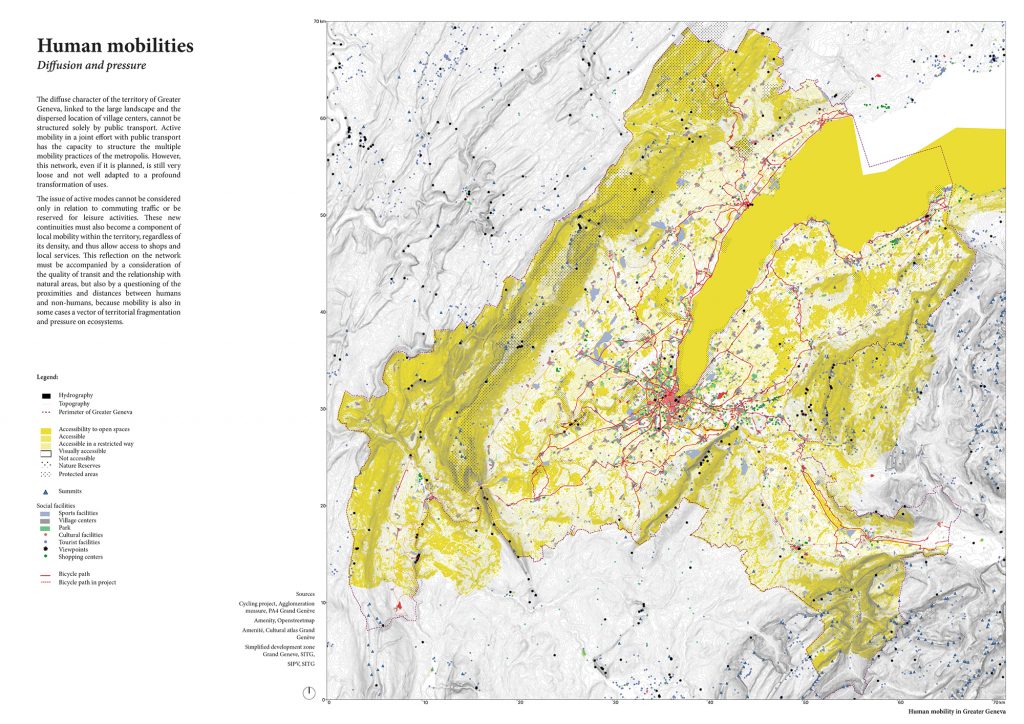
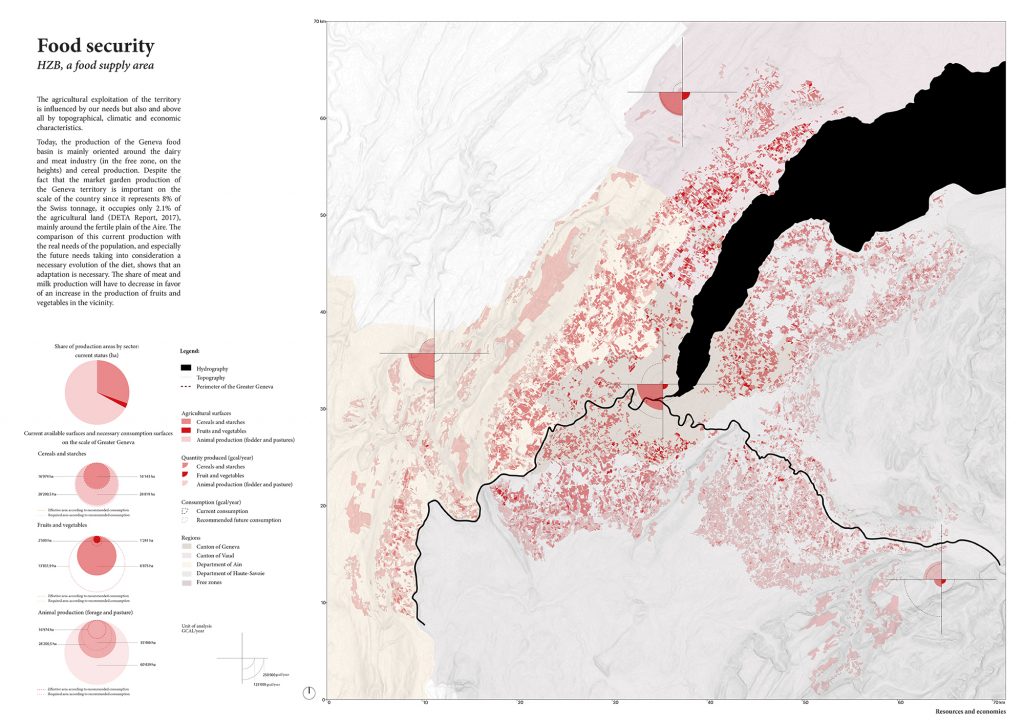
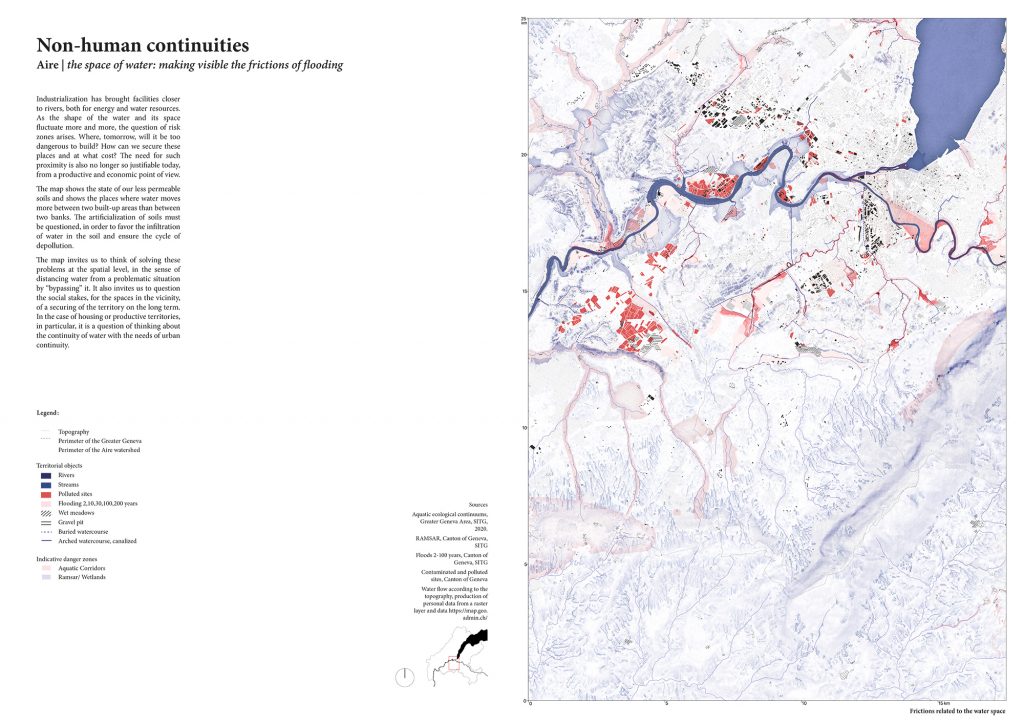
The more fundamental scope of our approach is to enable a paradigm shift in the interpretation of rural, open, non-built space within urban design and planning, transitioning from a heritage space – where rurality is understood as “capital” at the scale of the Canton of Geneva – to the status of a metropolitan agent, an active space in the multifunctional balances and dynamics of the entire territory, based on the full variety of its components, of all natures and scales. The hypothesis is that of non-built space as a structuring space; its structuring capacity relies as much on the entity of its extent, on the figures according to which it unfolds, as on the materials that constitute it. The overall vision is that of a space intended to guide not only policies related to rural areas (and therefore essentially related to agriculture, hydrology, biodiversity, etc.) but also metropolitan urban policies (notably densification, but also the city-nature relationship), through a guiding image that considers the interrelations between different land uses.
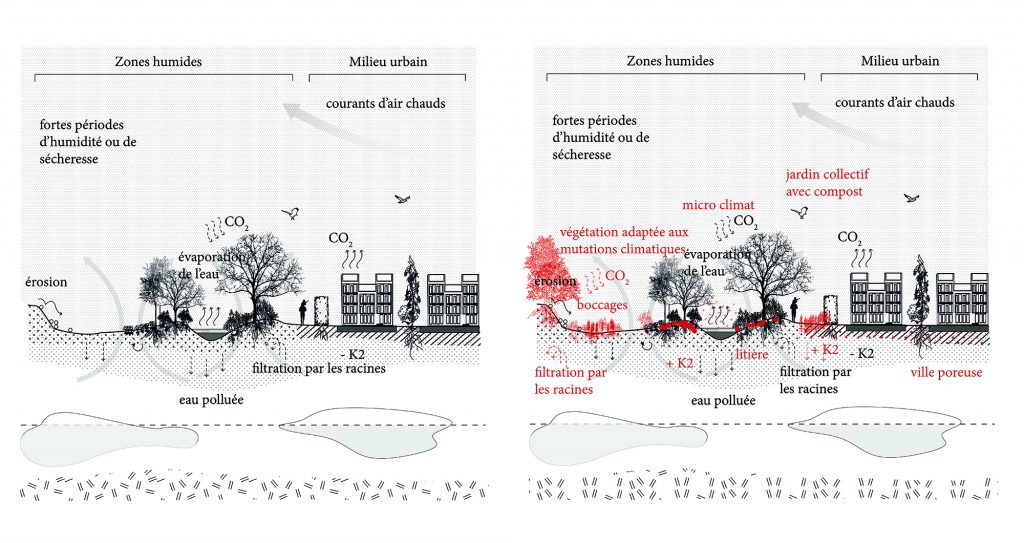
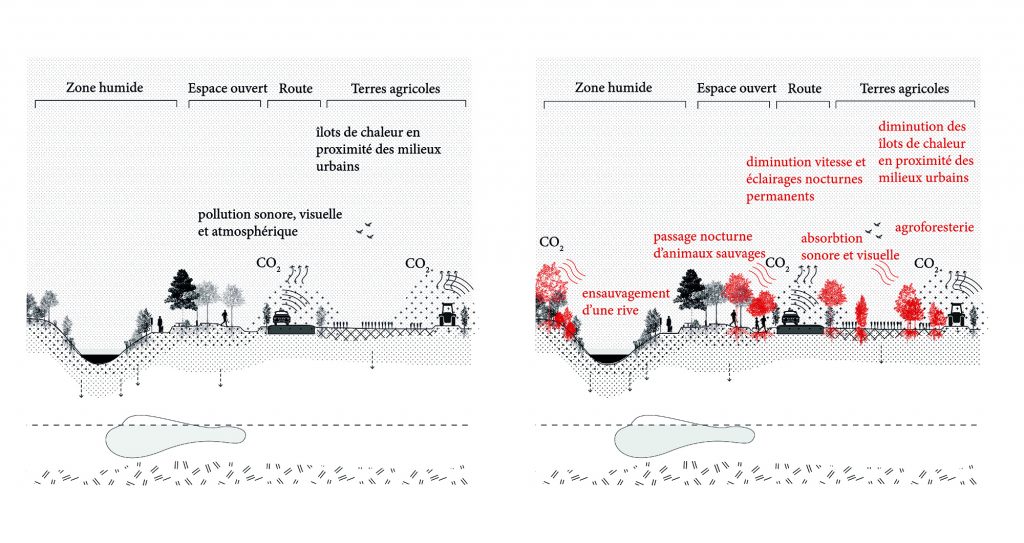
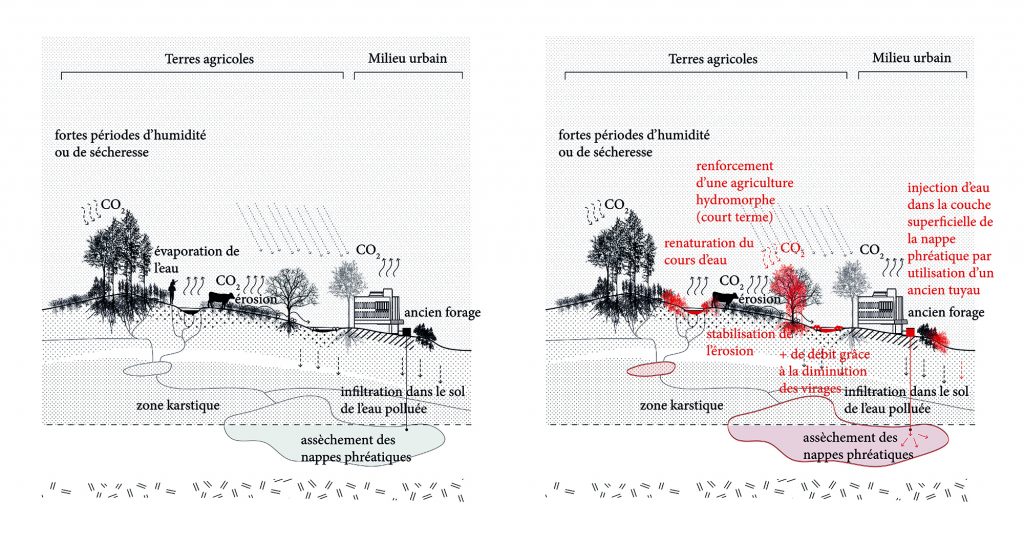
A Manifesto
The Metropolitan Infrastructure of Socio-Ecological Continuity responds to three fundamental conditions: it opens to the radical alteration of design perspective; it articulates the values of heterogeneity, coexistences, and marginality; it develops alternative eco-socio-spatial prototypes.
1) The first aspect concerns the design of an ecological space, experimenting with the Transition and its economic and social dimensions. The Infrastructure investigates ecosystem services to adapt the entire region to climate change. It enhances the specific characteristics of each territory, protecting the most fragile and reinvigorating others. It makes the territory and each of its components, a subject.
It is a privileged place for strategies relating to water, air, soil, and vegetation. Its various soils—along with the watercourses at risk of flooding, the fragmented green filaments, the minor dirt roads, the paths, including patches of agricultural land, and of asphalt, mineral and impermeable surfaces—become the prototypes for a regeneration project that can be expanded to the whole territory. They support a different type of mobility in a territory that is still seen as divided in two by the national border, and that continues to invest in car-based infrastructures.
2) The radicalism of the prototype can be fully understood only considering its status as surface publique (public surface), according to the design of a significant part of the Canton of Geneva by Albert Bodmer and Maurice Braillard in 1936 in their well-know Cantonal Development Plan. As its second aspect, the Metropolitan Infrastructure of Socio-Ecological Continuity is an opportunity for ecological, sociopolitical, and economic testing: for the sake of continuity—indifferent to urban and rural conditions—it is an acute instrument for reading and valorization of material and cultural features. Due to its collective nature, its space represents the general interest: it is a space for care and a new common in the cross-border space of Great Geneva.
It is not a scenario, but a concrete proposal to engage in “prototypes of coexistence”, valorizing spaces and economies of diffuse reconditioning, mitigation, and adaptation. Thus, it is conceived as a “special zone” for the Transition, within which to shape and manage the existing spatial and natural capital differently.
3) The Metropolitan Infrastructure of Socio-Ecological Continuity is a relational device that forces us to confront the socio-ecological and technical interdependencies, define their potentials and actors, and move towards a systemic idea of socio-ecological networks. In contrast to a hierarchical planning approach, it relies on weak elements: it aims to stimulate action and mobilize actors who are currently latent or marginal.
Distancing itself from the imperative nature of the modern project of continuity, it explores the construction of relations and continuities within a fragmented space. It builds in time, by light and definitive interventions, thanks to plural actions and actors. This demonstrative project enters the public arena, takes benefit of contingencies, levers potential for a multi-scalar, cross-border and equitable Transition, empowering human and non-human subjects; as such, it is recipient for several public policies, including the existing levers such as biological corridors, agro-urban parks, associative and productive spaces.
The research has been selected in 2022 to participate in the International Architecture Biennale Rotterdam (IABR 2022). A selection of maps from the atlas, videos produced as part of the MAS UTD 2021 Design Studio at EPFL, and an animated video illustrating the infrastructure were produced for this occasion.
Commissioned and funded by:
Direction du Projet d’Agglomération du Grand Genève, in partnership with Office Cantonal de l’Agriculture et de la Nature, Office Cantonal de l’Urbanisme and Pôle métropolitain du Genevois Français
Project Direction:
prof. Paola Viganò, prof. Elena Cogato Lanza, dr. Tommaso Pietropolli
Research team:
Marina Garlatti (coordination), Florence Bieth (co-coordination), Valentin Bourdon, Elena Calafati, Flore Guichot, Noélie Lecoanet, Mathilde Loiseau, Sylvie Nguyen, Marine Villaret
Steering Committee:
Emmanuel Ansaldi (OCAN), Frédéric Bachmann (OCEau / DT), Laurent Badoux (OU / DT), Valentina Hemmeler Maïga (OCAN / DT), Mathieu Iglesias (DPA / DT), Charlotte Le Gouic (Pôle métropolitain du Genevois français), Thierry Maeder (Région de Nyon), Güner Sengul Juranville (DPA / DT), Eric Zellweger (OU / DT)
External experts:
Sébastien Alcaix (Directeur des Services, Communauté des Communes Usses et Rhônes) « Planification transfrontalière ‘Hors Zone à Bâtir’ » ; Pascal Boivin (HEPIA) « La capacité du sol à se régénérer : pourquoi et comment ? » ; Derek Christie (HEdS-FR) « Les grands marcheurs peuvent-ils contribuer à la mise en place d’un système de transport sain et durable, basé sur la marche ? » ; Luc Deley (OCAN) « Tourisme rural sur le canton de Genève » ; Andrea Finger Stich (HEPIA) « Les services écosystémiques culturels » ; Benjamin Guinaudeau (UNIGE) « Infrastructure écologique GE-21» ; Anthony Lehmann (UNIGE) « Infrastructure écologique GE-21» ; Marie-Paule Mayor (Mayor + Beusch) « Planification transfrontalière ‘Hors Zone à Bâtir’ » ; Antoine Vialle (SAR-EPFL) « Cartographie des sols urbains » ; Marcos Weil (Urbaplan) « Agriculture : filières, flux et logistique »
